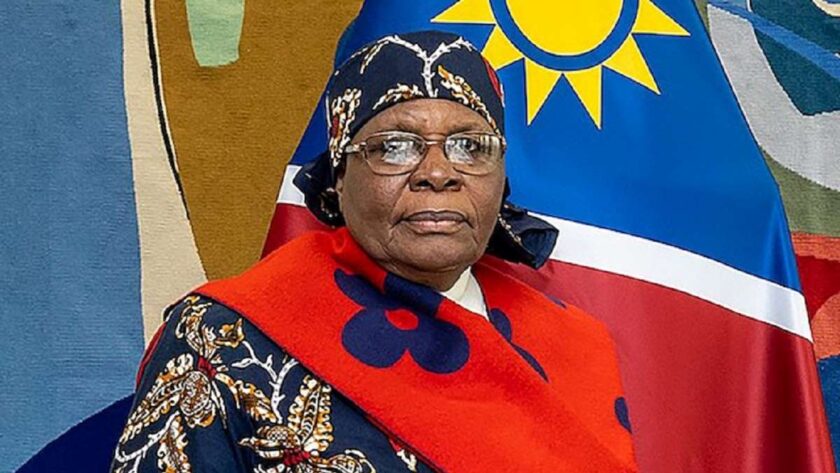Fitch Affirms Namibia at ‘BB-‘ with Outlook Stable
Fitch Ratings has affirmed Namibia’s Long-Term Foreign-Currency Issuer Default Rating (IDR) at ‘BB-‘ with a stable outlook.
According to Fitch, Namibia’s ratings are supported by its strong governance indicators and institutional framework relative to rating peers and fiscal financing flexibility underpinned by the large non-banking financial sector (NBFS), with assets amounting to about 180% of GDP in 2024.
Ratings analysts said this is balanced against high fiscal deficits and government debt relative to peers, large fiscal financing needs and a rigid expenditure profile.
Fitch expects real GDP growth to slow to 2.6% in 2025 from 3.7% in 2024 due to softer activity in agriculture and continued weakness in diamond mining. Real GDP growth slowed to 1.6% year on year in 2Q25 from 2.8% in 1Q25 and 3.3% in 2Q24.
“We expect weaknesses in diamond mining to persist, partly offset by higher uranium production and increased private sector activity supported by monetary easing since August 2024. We expect growth to recover to 3.2% in 2026 and 3.6% in 2027 on stronger uranium and gold production”.
Namibia’s Oil and gas exploration activity supports growth, but momentum has slowed since 2025 ahead of final investment decisions expected in 2026.
Ratings analysts said potential water and electricity supply risks pose downside risks to near-term growth prospects, but sustained investments in the mining sector should support medium-term growth prospects.
“We have not factored the potential impact of hydrocarbon production and large new foreign-funded renewable energy projects into our growth and fiscal projections, due to uncertainty about commercial viability and implementation timelines”, Fitch explained.
There will be downward pressure on government revenues due to weakness in traditional revenue drivers, the diamond sector and Southern African Customs Union (SACU) receipts, although this will be partly offset by higher uranium and gold revenue, Fitch said.
The government estimates that diamond-related revenues fell below 1% of GDP in the fiscal year ending March 2025 (FY24), from about 2% of GDP in FY23, and a rebound is unlikely.
SACU receipts will fall by 8% in FY25, to 9.5% of GDP, from 10.7% in FY24, with medium-term prospects uncertain. However, the government tends to cut spending in years with weak SACU revenue, mitigating the impact on fiscal metrics.
The government revised the budget deficit target for FY25 to 6% of GDP, from 4.6%, in its mid-year budget, in response to the 1H25 economic slowdown and revenue shortfalls.
Projected general government (GG) revenue was reduced by 1pp to 34% of GDP in FY25, broadly in line with our expectations, from 36% in FY24. In 1HFY25, revenue reached 39.6% of the full-year target, while expenditure was 38.6%.
Analysts expect weak revenue mobilisation to persist in 2HFY25, constraining spending execution. Fitch therefore projects a budget deficit of 5.8% of GDP, slightly below the revised target.
The authorities’ project average revenue growth of 1.8% a year until FY27, above Fitch forecast of 1.6%. Planned cuts to the non-mining corporate tax rate, targeting 28% by FY26 (30% currently), should attract investment, with anticipated revenue losses offset by several measures including the introduction of a 10% dividend tax from 1 January 2026.
The authorities also aim to pass the Income Tax Amendment Bill 2025 – which includes measures to strengthen tax administration and broaden the tax base- before FYE25 and develop a medium-term revenue strategy by February 2026.
Fitch ratings analysts expect GG revenue/GDP ratio will average 32% in FY25-FY27 amidst lower refinancing risks. Gross borrowing needs will peak at about 17 % of GDP in FY25 due to the USD750 million Eurobond maturity in October 2025, before easing to 12% in FY26, Fitch said.
Namibia redeemed the Eurobond using USD444 million from a sinking fund financed by transfers from SACU receipts, with the rest financed domestically.
Ample liquidity provided by banks and the NBFS, and strong demand for government securities support domestic financing flexibility. Ratings analysts expect GG debt/GDP to fall to 65% in FY25 from 67% at FYE24 due to the recent Eurobond redemption, and to reach 66% by FY27, remaining above ‘BB’ median of 54%.
The country’s contingent liabilities mainly arise from about 4.0% of GDP of government-guaranteed state-owned enterprises’ debt, and the government has been repeatedly called to service their guaranteed loans. Analysts project the interest /revenue ratio will rise to 15.3% in FY25 from 14.7% in FY24.
“We expect the current account deficit to remain high, averaging 12% of GDP in 2025-2027, mostly financed by foreign direct investment inflows linked to hydrocarbon and renewable energy projects.
2We forecast international reserves will drop to about USD 2.8 billion (3.0 months of current account payments) at end-2025, from USD3.4 billion at end-December 2024 (3.9 months of current account payments) after the Eurobond redemption. Nonetheless, we expect reserve coverage to remain consistent with the sustainability of the peg.”
Fitch expects average inflation to decline to 3.5% in 2025 from 4.2% in 2024. The Bank of Namibia has cut its policy rate by a total of 125bp to 6.5% since August, due to lower inflation expectations and efforts to address weak domestic demand.
The rate is 25bp below the South African policy rate. Fitch expects the Bank of Namibia’s monetary policy to remain consistent with the sustainability of the long-standing peg arrangement of the Namibian dollar to the South African rand. GTCO Slides Amidst Multiple Block Transactions

